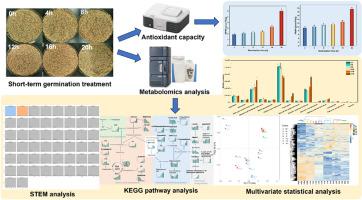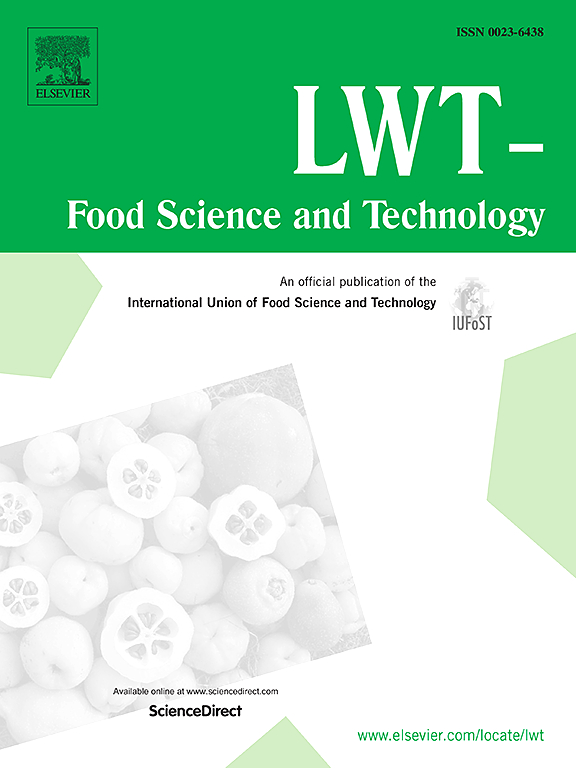Metabolomics analysis of germinated sesame (Sesamum indicum L.) seeds: Possibility of incorporating short-term germination treatments into the sesame production process
IF 6
1区 农林科学
Q1 FOOD SCIENCE & TECHNOLOGY
引用次数: 0
Abstract
Germination is an effective means to improve the nutritional value of sesame seeds. However, it is not clear whether it would be feasible to improve the nutritional value of sesame seeds by short-term germination treatments without causing substantial loss of oil. In this study, changes in the metabolite profiles of sesame seeds during short-term germination were analyzed by UPLC-MS/MS-based metabolomics. After 20 h of germination, the total phenolic and total flavonoid contents of sesame seeds were elevated by 2.16 and 1.53 folds, respectively, and the antioxidant capacity of their extracts was also significantly increased. At the same time, the oil content was not reduced. In metabolomics analysis, 48 bioactive compounds (19 terpenoids, 10 amino acids and derivatives, 7 flavonoids, 8 cinnamic acid derivatives, and 4 organic acids) were identified as key metabolites associated with elevated antioxidant capacity. Amino acid metabolism and the tricarboxylic acid cycle were the major metabolic pathways during sesame seed germination. Overall, it was possible to use short-term germination treatments as a means of pretreatment during the processing of sesame seeds products.

发芽芝麻(Sesamum indicum L.)种子的代谢组学分析:将短期催芽处理纳入芝麻生产过程的可能性
催芽是提高芝麻营养价值的有效手段。然而,通过短期催芽处理提高芝麻的营养价值而又不会造成油脂的大量损失是否可行,目前尚不清楚。本研究采用基于 UPLC-MS/MS 的代谢组学方法分析了芝麻在短期发芽过程中代谢物谱的变化。发芽20小时后,芝麻的总酚和总黄酮含量分别提高了2.16倍和1.53倍,其提取物的抗氧化能力也显著提高。与此同时,芝麻的含油量并没有降低。在代谢组学分析中,48 种生物活性化合物(19 种萜类化合物、10 种氨基酸及其衍生物、7 种黄酮类化合物、8 种肉桂酸衍生物和 4 种有机酸)被鉴定为与抗氧化能力提高相关的关键代谢物。氨基酸代谢和三羧酸循环是芝麻萌发过程中的主要代谢途径。总之,在芝麻产品的加工过程中,可以将短期发芽处理作为一种预处理手段。
本文章由计算机程序翻译,如有差异,请以英文原文为准。
求助全文
约1分钟内获得全文
求助全文
来源期刊

LWT - Food Science and Technology
工程技术-食品科技
CiteScore
11.80
自引率
6.70%
发文量
1724
审稿时长
65 days
期刊介绍:
LWT - Food Science and Technology is an international journal that publishes innovative papers in the fields of food chemistry, biochemistry, microbiology, technology and nutrition. The work described should be innovative either in the approach or in the methods used. The significance of the results either for the science community or for the food industry must also be specified. Contributions written in English are welcomed in the form of review articles, short reviews, research papers, and research notes. Papers featuring animal trials and cell cultures are outside the scope of the journal and will not be considered for publication.
 求助内容:
求助内容: 应助结果提醒方式:
应助结果提醒方式:


